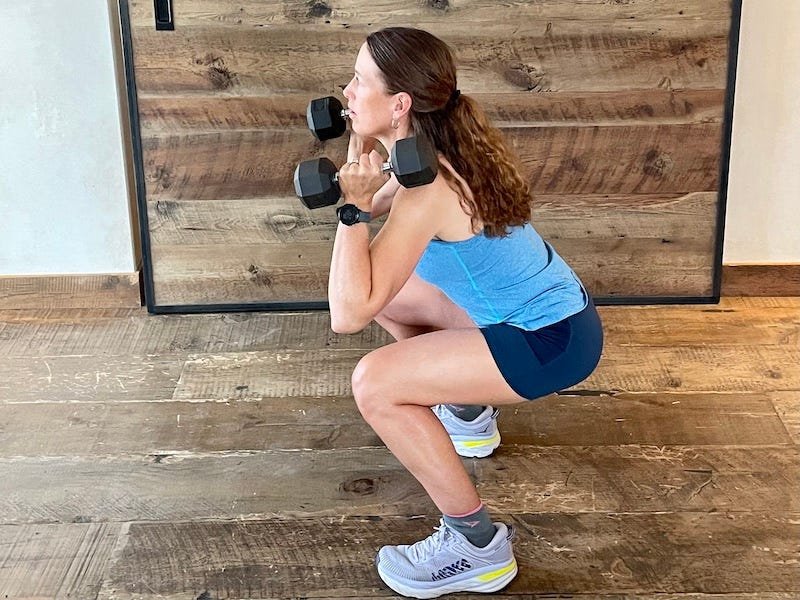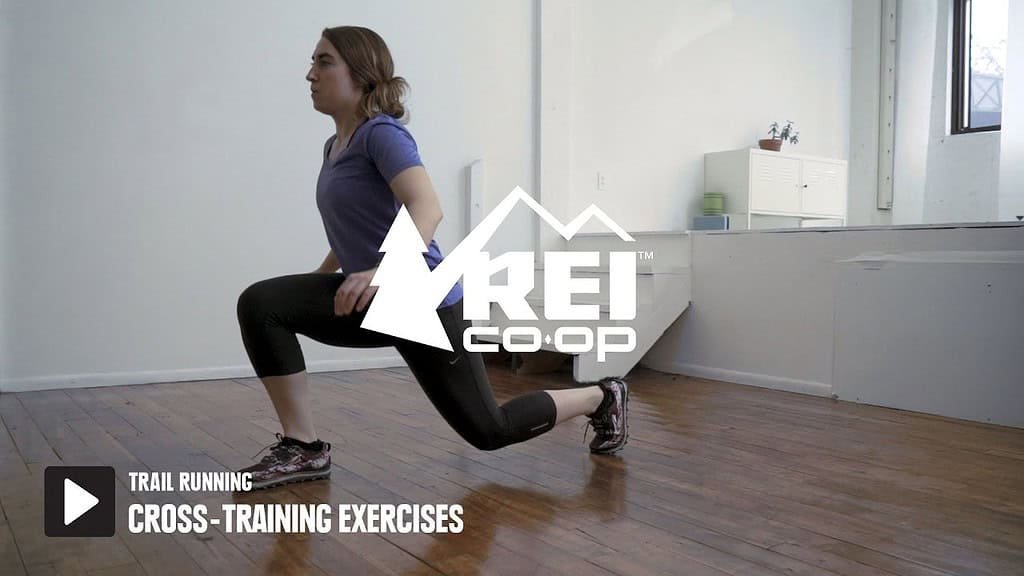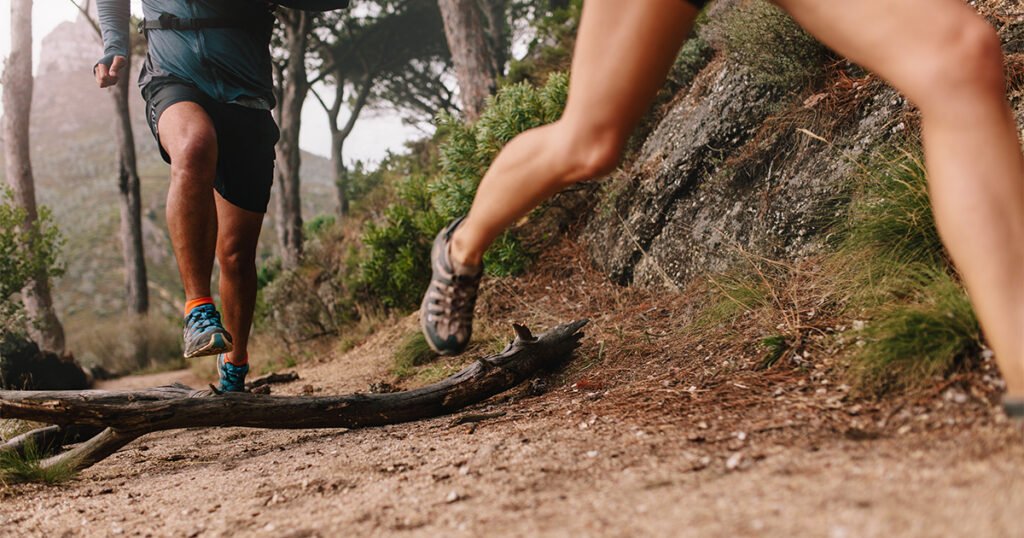
Hey there fellow trail runners! We all know that running on trails gets our hearts racing, but have you ever considered how a strength workout for runners can boost your performance? As someone who loves trail running, I’ve learned that adding strength training to our routines doesn’t just help – we need it. It’s not just about building muscle; it aims to improve our overall performance, balance, and lower our chances of getting hurt, which could keep us off the trails we love.
In this article, we’ll explore five crucial tips for strength training that trail runners need to know. We’ll look at exercises that copy what trail running requires, talk about how to plan your training for the best results, and check out workouts that build power endurance to help you on tough climbs. We’ll also discuss some cross-training ideas and exercises to prevent injuries keeping you running well and healthy. Get ready to learn some trail-specific strength training tips!
Functional Strength Training

Hey trail runners! Let’s chat about functional strength training. I’ve found out it’s a real game-changer for our off-road adventures. Unlike regular strength work functional training copies the moves we make on the trails. This helps us get stronger, faster, and less likely to get hurt.
Functional Training Benefits
Functional training has a big influence on our running performance. It goes beyond muscle building; it prepares our bodies to handle trail running demands. When we boost our functional strength, we build a stronger frame to support our running engine.
Science supports this claim. A study in Frontiers in Physiology revealed that athletes who did functional strength training improved their speed, muscle strength, power, stability, and agility. These improvements are crucial for navigating tricky trails!
Functional Exercises
So, what exercises should we do? Here are some I like:
- Single-Leg Step-Ups: These exercises build climbing strength. They work your quads and copy the action of powering up a hill.
- Rear Lunges: These exercises strengthen your legs to help with downhill running.
- Calf Raises: Don’t ignore these! They make your calves stronger, and also boost the small muscles in your feet and ankles – key for moving on uneven ground.
- Single-Leg Squats: These work out your glutes and quads while making your balance better – ideal for times when you’re jumping between rocks.
- Planks: Any type of plank is great to build core strength, which you need to stay stable on the trails.
Functional Training Progression
When it comes to making progress in your functional strength training, sticking with it is crucial. I’ve watched many runners get much better just by doing these exercises over and over again.
Begin with exercises that use your body weight then add more resistance as you become stronger. Try to do these workouts 3-4 times a week on days when you have easy runs or rest. Keep in mind, we don’t want to become weightlifters – our aim is to help our running.
One last bit of advice: don’t be scared to try new things with your functional training. Playing soccer, rock climbing, or going for hikes can also boost your overall strength and athletic ability. The main thing is to welcome movement patterns that test your body in different ways just like trails do.
By adding functional strength training to our workouts, we don’t just become better runners – we turn into more well-rounded athletes. Trust me, you’ll notice the difference on your next trail adventure!
Periodization for Trail Runners

As a trail runner, I’ve found that periodization has an impact on our training. It’s not just for top athletes; it’s a method we can all use to improve our performance and lower the chance of burnout or injury. Let’s explore how we can apply periodization to our trail running.
Periodization Benefits
Periodization gives us some great advantages. When we split our training into different phases, we can zero in on specific parts of our fitness at different times. This method helps us steer clear of doing the same stuff all year, which might lead to getting stuck or working out too much.
One of the main perks I’ve seen is how periodization cuts down on the chance of getting hurt from overuse. By putting in planned rest periods and tackling our weak spots step by step, we let our bodies adapt more to the growing workload.
Periodization Phases
From what I’ve seen, a good periodization plan for trail runners has these key phases:
- Base Phase: In this phase, we build our aerobic base. We focus on long slow runs to boost endurance.
- Build Phase: Our focus shifts to boosting strength and speed. We begin to add short intense workouts.
- Peak Phase: We hone our performance with race-specific training and tapering.
- Recovery Phase: Often ignored, but key. This phase allows our bodies to rest and adapt to training stress.
Periodization Implementation
Adding periodization to our trail running routine can be simple. Here’s my approach:
- Plan training : I split my workouts into smaller more manageable parts. This allows me to zero in on one area at a time.
- Add race-specific exercises: In the lead-up to the race (1.5 to 3 months before), I make sure to include exercises that mirror what I’ll face during the actual event.
- Vary the routine: I throw in workouts that change pace and terrain. This helps me practice switching between easy, moderate, and hard running. It not only improves my fitness but also keeps things interesting. Otherwise I get bored with the same mundane workouts every day.
- Be flexible: I often look over my training parts and make changes when I need to. Keep in mind, what helps one runner might not help another.
- Learn from experience: I see each training cycle as a chance to learn taking note of what’s effective and what falls short.
When we use periodization, we don’t just become stronger runners; we become smarter athletes. This means working with our bodies, not against them, to reach our trail running goals. So, let’s put on our shoes and hit those trails with a well-planned strategy!
Power Endurance Workouts

Hi fellow trail runners! Let’s chat about power endurance workouts. These workouts have changed the game in my training, and I can’t wait to tell you why they’re so important for us trail lovers.
Power Endurance Benefits
Power endurance workouts have changed my perspective. They don’t just build strength; they help you keep that strength for longer periods. I’ve seen big improvements in my running economy, which means I use less energy to keep my pace. It’s like giving your car’s engine an upgrade to get more miles per gallon!
These workouts help trail runners like us. They make it easier to handle those long tough climbs and move through tricky terrain. Since I started doing these workouts, I’ve noticed a big change in my ability to keep a strong pace on different types of ground.
Power Endurance Exercises
Now, what kinds of exercises do I mean? Here are some I like:
- Hill Repeats: Pick a hill with a 4-8% slope. Run up for 15-30 seconds at a fast pace. Jog down to recover. I do 4-8 repeats.
- Tempo Runs with Hill Bursts: During a steady run, add short intense uphill sprints every 5 minutes.
- Long Runs with Surges: On longer runs, include 30-second moderate effort bursts every 5 minutes. This helps to recreate race conditions.
- Lunge Variations: After an easy run, do 40 each of walking lunges, side lunges, and rear lunges. These exercises match the stress of steep climbs.
Power Endurance Progression
To make progress in power endurance, you need to be consistent. I began by doing these workouts once a week and slowly upped it to 2-3 times a week. Here’s a simple plan to level up:
- Week 1-2: Do one session per week, pay attention to form and get used to the exercises.
- Week 3-4: Do two sessions per week, bump up the number of reps or how long you do each exercise.
- Week 5-6: Do two to three sessions per week, make them harder or mix up the exercises.
Keep in mind, the aim is to create enduring strength. You don’t need to push yourself to the limit every session. Pay attention to your body’s signals and make changes when necessary. I’ve noticed that adding these workouts to my routine has boosted my trail running performance and made my runs more enjoyable. The diverse landscape doesn’t seem as challenging anymore!
Cross-Training for Trail Runners

Hey fellow trail runners! Let’s chat about cross-training. I’ve found out it has a huge impact on our off-road adventures. It goes beyond just running; it’s about growing into a well-rounded athlete.
Cross-Training Benefits
Cross-training has an influence on us in many positive ways. It doesn’t just build strength; it helps us keep that strength for longer. Here’s what I’ve seen:
- More strength and flexibility: We work muscles that we often ignore when we run.
- Less chance of injury: Our bodies get a break from the constant impact of running.
- Quicker recovery: Our muscles have time to fix themselves and grow after hard workouts.
- Healing: We stay fit while hurt muscles or joints get better.
- Mental refresh: Running can get boring. Cross-training mixes up our routine.
Cross-Training Activities
There are lots of fun ways to cross-train. Here are some of my top picks:
- Hiking: This mimics trail running but has less impact.
- Cycling: This builds leg strength and has a positive impact on heart health.
- Swimming: This sport has zero impact and builds upper-body strength.
- Cross-country skiing: This works well to train in winter when snow covers trails.
- Team sports: Soccer, Ultimate Frisbee, and basketball give you a great cardio workout.
- Yoga: This improves your balance, flexibility, and body awareness.
- Resistance training: Body-weight exercises like push-ups, squats, and planks help to develop overall strength.
- Plyometrics: This jump training builds explosive power and helps to increase running speed.
Cross-Training Implementation
I’ve learned that adding cross-training to your routine is easier than you might think. Here’s my approach:
- Frequency: I shoot for cross-training once or twice a week.
- Timing: I slot cross-training sessions between my running days.
- Balance: Keep in mind, if you want to boost your running, you still need to hit the pavement. Don’t let cross-training take over your plan.
- Variety: Switch things up! Different activities target different muscle groups.
- Intensity: To recover, pick low-impact activities at an easy to moderate level.
By doing cross-training, we don’t just become stronger runners; we transform into more well-rounded athletes. You’ll notice the difference on your next trail adventure!
Injury Prevention Exercises

Hello trail runners! We need to discuss something essential that people often ignore – injury prevention. Experience has taught me that avoiding injuries is essential to enjoy our trail adventures.
Injury Prevention Importance
I can’t emphasize enough how essential injury prevention is for us trail runners. Nothing is worse than an injury sidelining you during a great training cycle. I’ve learned that adding specific exercises to our routines can have a huge impact. These exercises don’t just help us avoid frustrating setbacks; they also boost our performance on the trails.
Injury Prevention Techniques
So, what can we do to keep injuries away? I’ve found some great techniques that have helped me:
- Strength Training: This transforms the game people! It’s not just about muscle growth; it’s about getting our bodies ready for trail challenges. I zero in on exercises that work my legs, ankles, knees, and core. These parts take the hardest hits during our runs.
- Stability Exercises: These are my hidden ace to boost core strength. I’m a big fan of using a stability disk for leg lifts and leg circles. It’s surprising how much these workouts help me stay quick on my feet when tackling tough terrain.
- Resistance Band Workouts: Clamshells with a resistance band around my knees are now a key part of my routine. They’re great to strengthen those often-overlooked hip muscles.
- Glute Bridges: I suggest these. They’re basic but good to activate and build our glutes, which play a vital role to power us up those steep hills.
Injury Prevention Routine
Here’s a basic routine I’ve created that you can add to your training:
- Begin with 10-15 minutes of strength exercises after an easy run. I do stair steps, split squats, and standing calf raises.
- On days off, I concentrate on stability work. Try to balance on one leg on a stability ball while you lean forward and extend the other leg behind you.
- Two times a week, I perform a set of resistance band exercises, including clamshells and glute bridges with a band around my knees.
Keep in mind that being steady matters most. I’ve noticed that putting these workouts into action on a regular basis has helped me steer clear of injuries and boosted my trail running skills. So, let’s make staying injury-free a top concern and keep dominating those paths!
Conclusion
Strength training for trail runners does more than just build muscle; it plays a key role to improve overall performance and lower injury risk. Adding functional exercises, periodization, power endurance workouts, cross-training, and injury prevention methods can take trail runners’ skills to the next level. These approaches not boost physical abilities but also help build mental toughness and flexibility on tough terrains.
As we’ve seen, taking a well-rounded approach to strength training has a big influence on a trail runner’s stamina, pace, and toughness. When you make these tips a regular part of your routine, you’re setting yourself up to do well on the trails. Keep in mind, sticking with it is crucial, and becoming a stronger more effective trail runner is an ongoing process. So put on those shoes, get out on the trails, and enjoy the benefits of all your hard work in strength training!
FAQs
1. What exercises should I do to increase my strength for trail running?
To boost your strength for trail running try adding these workouts to your routine: Split Squats to make your glutes stronger, Hamstring Walkouts to toughen up your hamstrings Single-Leg Calf Raises to build up your calf muscles, Box Step-Ups to power up your legs overall, Pull-Ups to strengthen your upper body, and Lateral Banded Walks to get better at moving sideways. These exercises will help you handle the demands of running on trails.
2. What’s the best way to train for trail running?
To get ready for trail running, you need a well-rounded workout plan. This should have exercises to build strength, like squats, lunges, calf raises, and vertical jumps. It’s also key to work on your balance with moves such as lateral lunges and single-leg squats. If you want to step up your game, think about adding stair climbs uphill sprints, and loaded climbs to your routine. These will help you tackle those uphill parts of the trail better.
3. What kind of strength training is optimal for runners?
Runners should focus on Unilateral Strength Training. This approach involves exercises that work one arm or leg at a time. It has benefits for runners because running uses one leg to hit the ground at any moment. This method helps to boost balance and strength on each side of the body.
4. How can I improve my endurance for trail running?
To boost your endurance for trail running add more miles to avoid getting hurt. Mix up your running speed to test your body, and train in stages to build a good base of miles while keeping things interesting. Also, running uphill can help to make you stronger last longer, and go faster.
